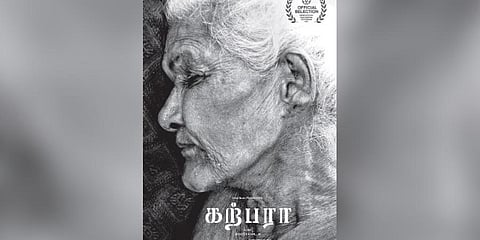

In Vignesh Kumulai’s Tamil film Karparaa ageing, neglect and sudden but potent detachment of familial bonds are observed in the minutest detail. It begins with the sound—of breathing, some crickets then an almost lifeless form beginning to move, sparking a debate as to what’s worse between invisibilization and dehumanization. The film premiered at the recently concluded International Film Festival Rotterdam.
Vignesh Kumulai is one of the cinematographers of PS Vinothraj’s Pebbles (Koozhangal), which won the Tiger award at the same festival in 2021. The narrative of the two films and their passage couldn’t be more different. While Koozhangal followed a journey, always on the move, Karparaa tries to capture imminent mortality in a bottle with its limited temporal space.
The film is a flurry of images with the camera capturing still life in a village, something that goes for both the shot-making as well as the subjects of focus in Vignesh’s film. The subjects are an old woman (Sundharathamal) and her husband (Arumugam) who live apart in homes of different children. Their daily life is reduced to its crudest form—still living. From Vignesh’s images, it’s hard to piece together the full family but that’s also the point, their lives go about in bed or crawling on all fours so often that they are likely unaware of the entirety of their own environs.
There is a grandson here, a daughter-in-law there, and maybe some other relative or a neighbour too. But it’s all the same day over and over again. Tamil cinema has encountered these subjects before, Balu Mahendra tackled the poignancy of the lives of elders in films like Sandhya Raagam (1989) and Veedu (1988). These were experiments that claimed independence from the demands of Tamil commercial cinema and its unforgiving melodrama. But they were still neorealist but narrative Tamil cinema.
Karparaa, on the other hand, is a set of vignettes, really nuggets from the homes the couple live in, the people they depend upon and those who shun them. There is an abundance of heat, flora, and fauna. Puppies at the teats of their mother and a calf violently crashing its head into the cow’s udder. There is young life around them in different forms but while they contain love there is also a little violence.
Karparaa doesn’t flinch from showing the anile image of a woman with wrinkles and jaws without teeth trying to chew on some leaves. There is an attempt to tie the white hair into a knot and doddering at an absent-minded, disinterested grandson to help his grandmother urinate. He chastises her for considering a response to nature’s call. The grandsons would rather be on their smartphones all day.
There are times the film turns dark and we see tall, dying trees that look hundred years old and withering away. As a break in momentum, the old man’s thoughts enter the images and the lucid, dispassionate account of his state is at odds with his disposition and treatment. Karparaa requires no words, the image of a bossy middle-aged man having a wife tend to the soles of his feet with the oldest person in the family rotting next to him on a cot speaks more powerfully than any verbal exchange.
Karparaa is a steady, motionless and unyielding look at the way multiple generations remain apathetic and disdainful towards the oldest one alive and what it really tells about us—that we don’t consider the precarious nature of mortality and we rather err on its side and believe that we’d be long gone before facing such a situation ourselves.
Biweekly Binge
A fortnightly column on what’s good in the vast ocean of content in the streaming platforms around you
Film: Karparaa
Director: Vignesh Kumulai